At Linden Hall Elementary School, students learn about Japanese culture during “Moral Education” classes.
Linden Hall has top-class external instructors to teach “Tea Ceremony”, “Pottery” and “Kyudo”. Students also learn about rice cultivation using rice paddies located on the school grounds.
There is a reason for this approach. In a global society, each individual has many opportunities to express their opinion as a representative of their home country. They will often be asked about the practices of their home countries or their viewpoints and opinions as a Japanese person. Understanding of and familiarity with the culture of their home country is crucial. Furthermore, in order to understand and respect the diversity of people from different backgrounds, it is necessary to understand and respect one's own country. We believe that this is an important form of education.
The aim is not the acquisition of skills, but to learn the unique Japanese values of hospitality and gratitude through classes and to acquire an identity as a global citizen.
Mushanokoji-senke
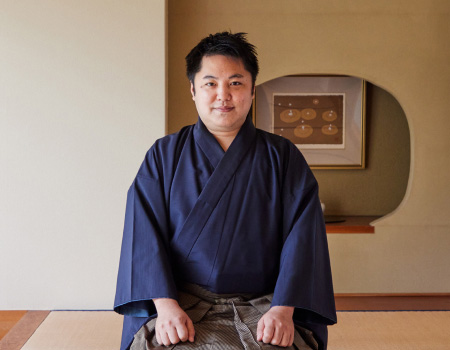
Rather than teaching the knowledge and traditions of the tea ceremony as a lesson, the first priority of the tea ceremony class is to foster the “spirit” of “Omotenashi ” (hospitality) and “Kansha-suru” (gratitude). Making tea is a form of hospitality for the enjoyment of others, and those who received such hospitality expressed their heartfelt gratitude. I want students to understand these honest feelings.
And, the tea ceremony becomes a place where many people receive tea to drink, so they learn to wait their turn and the spirit of compromise. I want students to be patient for up to 10 minutes, but if it's difficult for them to do that, I try to occupy them by offering distractions and guide them to gradually become more patient. It is a pleasure for those who teach tea ceremony over several years to see not only physical but also mental growth. For example, when I see that they take the initiative in preparing before and cleaning up after making tea, or when children younger than me take a lot of time to help, I feel that they have grown up and it was worth teaching them.
Although it is possible to learn traditional manners as knowledge even in adulthood, I believe that the mental training and learning of the Japanese “spirit” should be done only when students can absorb various things like sponges.
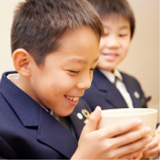

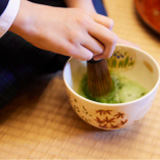
Agano-yaki / Kouzuru-gama Pottery
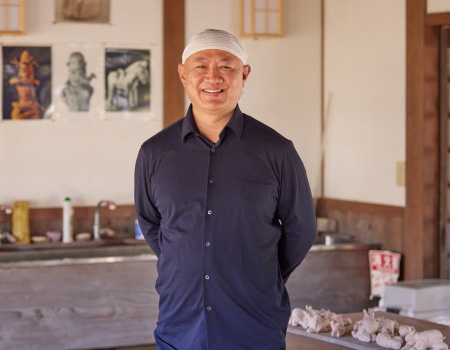
I think ceramic art has the power to foster a delicate sense and sensitivity. The process of creating a container while imagining various aspects, such as how it feels when people use it, how light it is, how heavy it is, and how it fits in the hand when held, is something only humans can do, and AI cannot. In addition, it is an important part of emotional education to stimulate delicate sensations such as the texture and temperature of the soil when crafting, and the texture of the vessel after baking. I want students to have many of these experiences.
Furthermore, ceramics has the power to cultivate human power. When there are inconveniences or failures, people use their ingenuity. This is very important. For example, if a tea bowl is distorted when it is formed, we must think about how to repair it, or how to make use of the distortion, or how to make use of the ingenuity in colouring. A multifaceted approach may result in a unique work that other people cannot recreate. In this process, students can learn how to turn failure into success. When they go out into society, they face many difficulties. Instead of being frustrated by big mistakes all as an adult, if they have the experience of making small mistakes one by one as a child, they will develop the determination to not give up and they will be able to overcome challenges.


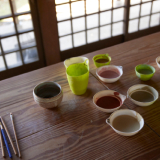
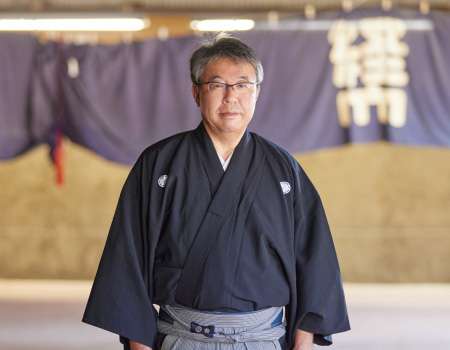
In Kyudo, students can not only improve their physical strength but also acquire mental strength.
In Kyudo, there is a word called “Seisha hitchu”. This means that if they shoot correctly, they will surely hit the target, so the idea is that “focus not on hitting the target but on shooting correctly”. I believe that their ability to concentrate on everything without overemphasizing themselves will certainly be useful in the future, both in terms of study and when they enter society in the future.
Kyudo also plays an important role in “cherishing life”. We sometimes say “Arigatou gozaimasu” and “Itadakimasu” without thinking about the real meanings, but students can deeply understand the meaning of “receiving” life through Kyudo. For example, the “Yugake” leather gloves worn on the hands holding the bow, are made from deer leather, and the feathers used for the arrows are those of birds of prey and turkeys. Animals do not provide these of their own free will. Human beings take their lives and use their body parts as tools. By fully understanding this, they can naturally develop a feeling of gratitude for life and learn how to value their tools and objects given to them. I would like to teach them the meaning of these feelings.

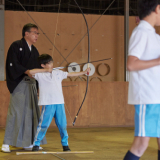
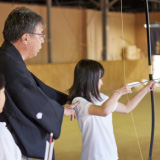
Students plant rice, grow rice, and learn how to harvest rice at the rice paddies located within school grounds. We will show them not only how the rice is harvested, but also what is ahead. The harvested rice straw is then burned to ash, glaze, and used in pottery class. The glaze is used to make tea bowls. In the tea ceremony class, students make tea with their own tea cups and entertain the guests. Grade 5 and 6 students experience making new year decoration using rice straw. We invite guest teachers and students to have an opportunity to learn about new year, the reasons why we display new year decorations and origins of the decoration. The rice that is grown at Linden farm is glutinous rice. After harvesting, a rice cake making festival is held in January and rice cakes are distributed to local facilities. Through this series of activities, students will understand the life and environment of Japan and learn about the ancient culture of using rice to its fullest potential and cherishing things. They can also learn about how rice cultivation relates to nature in Japan and has developed as a culture through hands-on experience in an environment rich in nature.
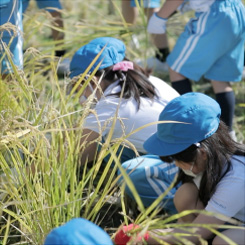


Loading